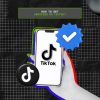Why Good Web Design Is Now A Core Ranking Factor?
Dec 29, 2025

Dec 29, 2025

Dec 26, 2025

Dec 26, 2025

Dec 26, 2025

Dec 24, 2025

Dec 24, 2025

Dec 23, 2025

Dec 23, 2025
Sorry, but nothing matched your search "". Please try again with some different keywords.


Within the vibrant processes of B2B SaaS enterprises, the onboarding journey holds profound significance in sculpting customer satisfaction and, consequently, the fate of the product.
Effective B2B SaaS customer onboarding surpasses mere user acquisition. It’s about swiftly and seamlessly unlocking the product’s value for users.
It’s mandatory to address such strategies and methodologies to refine the customer onboarding experience within the B2B sphere.
Customer onboarding is the first touchpoint between a user and a SaaS product, setting the tone for the entire customer journey.
Elaborating a proper marketing strategy B2B SaaS is necessary to connect these users and the goal of getting such clients.
To do this, adopting software that often involves multiple stakeholders and complex decision-making processes is paramount. A well-designed onboarding process can:
Properly addressing onboarding with such practical strategies can greatly help to optimize the customer process in a B2B SaaS environment:

One size does not fit all in customer onboarding. B2B SaaS products often cater to diverse customer segments with varying needs and use cases.
Therefore, tailoring the onboarding experience to each customer segment is crucial. This can be achieved through:
Knowing what’s more suitable for a company is of extreme importance because it can ensure the success or lead to the failure of businesses.
Navigating a new software platform can be overwhelming for users, especially in complex B2B environments.
Guided product tours provide a structured introduction to the product’s key features and functionalities, helping users familiarize themselves with the platform quickly.
Some best practices for implementing guided product tours include:
Making it easier and more interactive for customers means they’re more likely to dwell for longer on a website, increasing the chances of acquiring new sales.
While automated onboarding experiences are valuable, human interaction remains indispensable, particularly in B2B SaaS environments where software adoption often involves collaboration among multiple stakeholders.
The importance of providing hands-on training and support can significantly enhance the B2B SaaS customer onboarding process and must not be neglected.
Assign dedicated onboarding specialists or customer success managers to guide new users through the onboarding process, address questions and concerns, and offer personalized assistance.
Conduct live training sessions or workshops where users can interact with experts, ask questions, and receive real-time guidance on using the product effectively.
Optimizing the customer onboarding process is an ongoing endeavor that requires continuous monitoring, analysis, and refinement.
Tracking key performance metrics and gathering user feedback helps SaaS companies identify areas for improvement and iterate on their onboarding strategies:
Measure onboarding success metrics such as time-to-value, activation rate, feature adoption, and customer satisfaction scores.
Analyze these metrics to identify bottlenecks or friction points in the onboarding journey.
Solicit feedback from users at various stages of the B2B SaaS customer onboarding process to gain insights into their experiences, pain points, and suggestions for improvement.
Leverage this feedback to make iterative changes and enhancements to the onboarding process.
Data-driven approaches to onboarding optimization are instrumental in refining the onboarding process continuously.
B2B SaaS companies can gain valuable insights into user behavior, engagement patterns, and conversion rates with analytics.
Through comprehensive analysis of these metrics, businesses can identify specific areas within the onboarding journey that may require enhancement or modification.
Utilizing A/B testing methodologies allows companies to experiment with different onboarding strategies and variations in real-world scenarios.
Additionally, testing multiple iterations simultaneously and measuring the impact on KPIs is vital for organizations.
Here, major KPIs include activation rate and time-to-value.
Why? To make informed decisions about which B2B SaaS customer onboarding approaches are most effective for different customer segments or use cases.
Moreover, data-driven onboarding optimization enables companies to adopt a proactive approach to user engagement and retention.
By identifying early warning signs of churn or disengagement through data analysis, businesses can intervene promptly with targeted interventions or personalized outreach efforts to re-engage users and prevent attrition.
Automation plays a pivotal role in streamlining the onboarding process, particularly in B2B SaaS environments where scalability and efficiency are paramount.
These repetitive tasks and workflows must be automated, reducing manual overhead and human error.
One key area where automation can be particularly beneficial is in the delivery of personalized onboarding experiences at scale.
Through the use of email sequences, in-app messaging, and chatbots, companies can deliver timely and relevant onboarding content to users based on their specific needs, preferences, and behaviors.
Automated messaging workflows are also useful to guide users through each step of the onboarding journey, providing guidance, assistance, and support as needed.
In addition to all of this, automation is important because it enables organizations to maintain consistency and continuity in the B2B SaaS customer onboarding process, regardless of the volume of new users or the availability of human resources.
Integrating customer feedback into the onboarding process is essential for ensuring that the experience remains relevant, effective, and aligned with user needs and expectations.
Doing this means that organizations must create feedback loops that allow users to provide input on their onboarding experience, with companies gaining valuable insights into pain points, preferences, and areas for improvement.
There are various methods through which organizations can solicit and gather customer feedback during the onboarding process.
Surveys, user interviews, and support interactions are all effective means of capturing user sentiment and identifying opportunities.
Analyzing and synthesizing this feedback helps prioritize and implement iterative updates to the onboarding process that address user concerns and optimize the overall experience.
Involving customers in the feedback and iteration process also fosters a sense of ownership and partnership.
This, in turn, strengthens the relationship between the user and the company. Moreover, this also helps organizations cultivate a culture of customer-centricity and continuous improvement.
In B2B SaaS environments where users often need to access multiple platforms and applications, simplifying the authentication process can significantly enhance the B2B SaaS customer onboarding journey.
SSO or Single sign-on solutions enable users to gain entry into multiple systems and applications. These make use of a single group of credentials, thus reducing the need for separate login credentials for each platform.
Identity providers such as Google, Microsoft, or Okta can help organizations streamline the authentication process and provide users with a seamless and secure login experience.
Additionally, role-based access controls (RBAC) allow organizations to manage user permissions effectively.
Moreover, this ensures that users have access to the right features and data based on their roles within the organization.
Implementing a multi-channel communication strategy during the onboarding process is essential for accommodating diverse user preferences and maximizing engagement.
Users expect flexibility and choice in how they receive information and communicate.
Companies must reach users where they are most comfortable. As a result, companies can ensure that important messages and updates are delivered in a timely and accessible manner.
Email remains a popular and effective communication channel for delivering onboarding content, also, for providing users with detailed information, instructions, and resources.
Additionally, in-app messaging and push notifications offer more immediate and contextually relevant communication options.
This allows companies to engage users directly within the product environment. SMS can be used to deliver urgent or time-sensitive communications.
Optimizing the customer onboarding process is paramount for B2B SaaS companies looking to drive user adoption, engagement, and retention.
Moreover, personalizing onboarding journeys and providing guided product tours can create seamless and impactful onboarding experiences. The best part? It sets the foundation for long-term customer success.
So, keep in mind that successful onboarding is not just about getting users in the door.
Rather, it’s about setting them up for success and fostering meaningful relationships that drive value for both the customer and the business.
Additionals:
Chandrima is a seasoned digital marketing professional who works with multiple brands and agencies to create compelling web content for boosting digital presence. With 3 years of experience in SEO, content marketing, and ROI-driven content, she brings effective strategies to life. Outside blogging, you can find her scrolling Instagram, obsessing over Google's algorithm changes, and keeping up with current content trends.
View all Posts
Why Good Web Design Is Now A Core Ranking Fac...
Dec 29, 2025
The Quiet Arrival of True Color: How E-Ink Te...
Dec 26, 2025
Top 7 SEO Use Cases AI Automation Can Handle ...
Dec 26, 2025
Beyond SEO For Travel Agency: The Psychology ...
Dec 26, 2025
How To Get Verified On TikTok? Tips To Boos...
Dec 24, 2025

